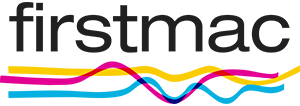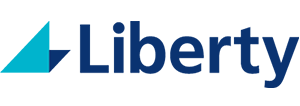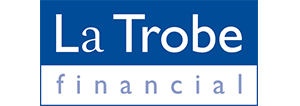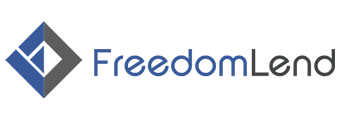Top SMSF Loan Rates - November
SMSFs are increasing in popularity with more than 650,000 funds, 1.2 million members, and more than $1 trillion in assets. Limited recourse borrowing arrangements (LRBA), otherwise known as SMSF loans, are increasing in popularity too with more than $70 billion held in SMSFs.
Many of the top rates are offered by non-bank lenders, as many banks including the majors have pulled out of the LRBA market. Here are the top SMSF residential property loan rates as per our research - they tend to be higher than on regular home loans.
Now with three RBA cash rate cuts so far in 2025, some of these rates have started coming down and could come down further pending further action.
|
Brand |
Product |
Advertised % Rate Per Annum |
Comp. % Rate Per Annum |
|---|---|---|---|
|
Homestar Finance |
Refinance Special 70% LVR |
6.14% |
6.20% |
|
Reduce Home Loans |
Ezy SMSF Refinance 80% LVR |
6.19% |
6.21% |
|
loans.com.au |
Residential SMSF 70% LVR |
6.24% |
6.26% |
|
La Trobe |
Residential SMSF 80% LVR |
6.34% |
N/A |
|
Yard |
Residential SMSF 60% LVR |
6.40% |
6.81% |
Correct as of 1 October 2025.
How do SMSF loans work?
An SMSF loan is used to fund the purchase of residential or commercial property to be held within a self-managed superannuation fund. The main difference compared to a regular home loan is that SMSF loans are technically what's called a limited-recourse borrowing arrangement or LRBA for short. This means in the event of default a lender can't come after other assets in the fund - only the asset the loan is secured against.
Fun Fact
SMSF loans are growing in popularity. The latest Australian Tax Office (ATO) data reveals there is more than $70 billion worth of LRBAs - a marked increase from less than $30 billion in 2017.
Compare SMSF Loans
While there aren't as many lenders who offer SMSF loans compared to conventional home loans, there are still plenty of different products to choose between.
These are some of the most significant factors to consider if you're trying to choose which is right for you.
SMSF loan interest rates
As with normal home loans, the interest rate on your SMSF loan is probably the most important consideration.
Interest rates on SMSF loans are typically higher than what you'd associate with regular home loans. This is because of the limited recourse as mentioned earlier which means there is a slightly higher risk for the lender.
When an SMSF is borrowing from a related party, the ATO specifies what it considers to be a competitive rate - a handy way to assess the advertised rate you're being offered.
-
For the 24/25 financial year, the interest rate for real property is set at 9.35% p.a. and 11.35% p.a. for units.
However, if you find a lower rate than this you shouldn't automatically assume it's a stronger rate. This is only a benchmark and there may be several lenders offering lower, so it's still smart to compare a variety of different options.
Fees
An SMSF loan typically also includes several additional fees on top of the interest. A one off establishment fee, monthly servicing fees and charges for early settlement are all common. These extra costs can add up so it's worth paying attention to.
Fees are generally higher on SMSF loans compared to regular home loans because of the increased admin for the lender, dealing with trust deeds, correct lodging with the regulatory bodies and so on.
Australian lenders are required to give a comparison rate on every product they offer, including SMSF loans. This takes these additional fees into account to provide a more comprehensive picture of the total cost - a product with a comparison rate much larger than the advertised rate suggests there are lots of extra charges.
SMSF Loan basics
SMSF lenders
Many of the most popular providers for SMSF loans are non-bank lenders. A lot of major banks no longer offer SMSF loans, which has allowed these smaller lenders to take market share.
Some providers include:
-
Freedom Lend
-
Switzer Home Loan
What documents do you need to apply for an SMSF loan?
Lenders will typically ask for several documents to support your loan application. As with regular home loans you'll probably need to hand over identity documents like your drivers licence or passport. However, since the loan will be in the name of the superannuation fund rather than your own, you'll need to provide evidence demonstrating the fund's income.
This generally will include:
If you're refinancing an existing SMSF loan, you might also need evidence that the mortgaged property is generating rental income.
Commercial or residential property
One of the biggest decisions you'll have to make is if you want to invest in commercial or residential property, and pick the right loan. Loans are typically meant for one or the other.
With commercial property loans, you can usually borrow more, such is the nature of commercial property. However you might need a lower loan-to-value ratio (LVR), explained further below.
Until semi-recently, SMSF loans typically only catered for commercial property, however loans for residential purposes have become more popular.
LRBA reporting requirements
Funds that are using an LRBA or SMSF loan must work out and include a member's share of the outstanding balance of the loan at 30 June each income year. If there are four members, you could divide the balance by four. More details can be found on the ATO website here.
SMSF loan benefits
1. Leverage and opportunity cost
Like with a regular home loan, your deposit to secure an SMSF loan means you could purchase a property potentially worth millions. This saves having to use SMSF cash funds to purchase a property, which may not be enough. If you have the cash, a loan also frees up that cash to be put towards other investments, potentially yielding higher returns.
2. Assets
You usually have the choice of purchasing either residential or commercial property. Commercial property comes with the benefit of usually having long-term stable tenants with a high rental yield, and properties worth millions.
3. Flexibility and repairs
Borrowed funds can typically be used to repair existing fixtures in a home owned by the SMSF. However you'll have to be careful - the ATO can penalise fund members and trustees for making improvements such as a shiny new bathroom rather than necessary repairs such as a leaking roof.
Drawbacks of an SMSF loan
1. Fees
Fees on SMSF loans can be high, often costing hundreds or potentially thousands of dollars over the life of the loan. This adds to the costs of self-managing super in general, which might not be cost effective until your balance is high.
2. SMSF restrictions and penalties
One of the overarching policies of self-managing super is the 'at arm's length' test. For property this means you can't lease to anyone related to you or other fund members, or give anyone a special rental price - they must be market rates. Regular audits means the ATO could penalise you if you're in breach of this, which could cost thousands. Penalties must be paid by funds outside of the SMSF.
Commercial property SMSF loans are more flexible, however, as they allow you to rent your own business property from yourself, then pay rent into your SMSF.
3. Turnaround times
Due to the nature of SMSFs there's an additional layer of complexity should you wish to apply, refinance, or discharge your SMSF loan. Many SMSF loans' application processes take longer than regular home loans, and settlement could take many weeks - not days. This makes it even more important to have all your paperwork and financial information ready for the lender. This can be made easier by having an accountant or SMSF specialist handle the paperwork for you, but this comes at an added cost.







